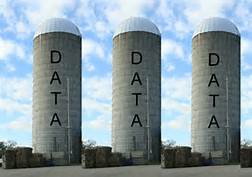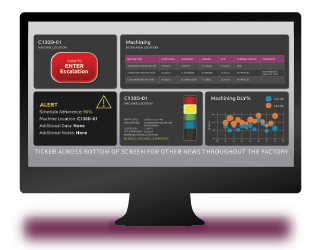
By Sarah Balogh
Made for Manufacturers
A common statement I hear from customers is that they are working with technology and software that doesn’t provide the functionality they need as manufacturers. They are told that certain enterprise software packages “can do everything” they need to plan, schedule, and run their factories. But months after implementation they feel a sense of disenchantment. Why is this?
Software Made for Manufacturing
What these customers have in common is that they bought software that can be used for manufacturing. But what they really need is manufacturing software. True software built for manufacturers provides capabilities and value unique to companies in the business of planning and producing goods to bring to market. Manufacturing software is created with the industry and business of manufacturing in mind. It is built with the intention of providing an organization the tools it needs to gain control of their production floor, deliver quality goods on time, and gain visibility into operations and the supply chain beyond the four walls of the plant.
The good news is even if you didn’t purchase manufacturing software initially, you always have the opportunity to start the journey of enabling the factory of the future, exactly from where you are today. How? By selecting manufacturing software that can integrate and play nicely with your existing systems while providing the specific manufacturing functionality you need.
Connect to Anything and Everything
Manufacturing enterprises today have one thing in common – they are all unique. They have nothing in common with other manufacturers’ architecture and solution portfolios. Each organization tends to be a mixed collection of legacy, new enterprise, and point solutions (with the ability to access data within and across these solutions just as varied for each company). Therefore, one of the elements that good manufacturing software should include is the ability to connect to and take advantage of all of this data, plus any future data sources. This makes it possible for any company, wherever they are in their continuous improvement or demand-driven journey, to start harnessing the power of their own information to drive decisions from real data.
To start driving value for your manufacturing business, I recommend using a factory visualization solution that has the ability to connect to and use this existing data for analysis, visibility and to serve as the much sought after single version of the truth. Suddenly data across the enterprise is liberated to serve your organization as usable and actionable information. When your different technologies are all connected to a visual factory system, you break down the data silos. In combining these data sources, you become empowered with information, gaining new and more comprehensive insight into your environment and business.
At this year’s IndustryWeek Manufacturing & Technology Conference, Orbital ATK shared how they connected their environment to enable the Internet of Things and how they are using visual factory technology as a communications tool and a means to respond to issues in real time. (YouTube video.)
Next time we will talk more about what a good factory visualization tool should be able to do, and why those capabilities are necessary. In the meantime, please leave a comment!


